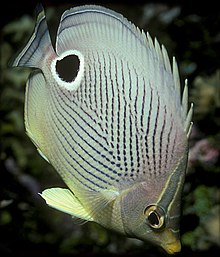
Back بوابة:علم البيئة Arabic Portal:Ecologia Catalan Portal:Økologien Danish Portal:Ecología Spanish درگاه:بومشناسی Persian Portail:Écologie French 포털:생태학 Korean Портал:Екологија Macedonian Portal:Ecologia Portuguese Portal:Ecologie Romanian
| |
|
|
Ecology
|
|
Ecology (from Ancient Greek οἶκος (oîkos) 'house', and -λογία (-logía) 'study of') is the natural science of the relationships among living organisms, including humans, and their physical environment. Ecology considers organisms at the individual, population, community, ecosystem, and biosphere levels. Ecology overlaps with the closely related sciences of biogeography, evolutionary biology, genetics, ethology, and natural history. Ecology is a branch of biology, and is the study of abundance, biomass, and distribution of organisms in the context of the environment. It encompasses life processes, interactions, and adaptations; movement of materials and energy through living communities; successional development of ecosystems; cooperation, competition, and predation within and between species; and patterns of biodiversity and its effect on ecosystem processes. Ecology has practical applications in conservation biology, wetland management, natural resource management (agroecology, agriculture, forestry, agroforestry, fisheries, mining, tourism), urban planning (urban ecology), community health, economics, basic and applied science, and human social interaction (human ecology). The word ecology (German: Ökologie) was coined in 1866 by the German scientist Ernst Haeckel. The science of ecology as we know it today began with a group of American botanists in the 1890s. Evolutionary concepts relating to adaptation and natural selection are cornerstones of modern ecological theory. Ecosystems are dynamically interacting systems of organisms, the communities they make up, and the non-living (abiotic) components of their environment. Ecosystem processes, such as primary production, nutrient cycling, and niche construction, regulate the flux of energy and matter through an environment. Ecosystems have biophysical feedback mechanisms that moderate processes acting on living (biotic) and abiotic components of the planet. Ecosystems sustain life-supporting functions and provide ecosystem services like biomass production (food, fuel, fiber, and medicine), the regulation of climate, global biogeochemical cycles, water filtration, soil formation, erosion control, flood protection, and many other natural features of scientific, historical, economic, or intrinsic value. (Full article...) Selected article -
The issue of what exactly defines a vacant niche, also known as empty niche, and whether they exist in ecosystems is controversial. The subject is intimately tied into a much broader debate on whether ecosystems can reach equilibrium, where they could theoretically become maximally saturated with species. Given that saturation is a measure of the number of species per resource axis per ecosystem, the question becomes: is it useful to define unused resource clusters as niche 'vacancies'? (Full article...)
Selected image - Credit: NASA The carbon cycle is the biogeochemical cycle by which carbon is exchanged between the biosphere, geosphere, hydrosphere, and atmosphere of the Earth. Burning fossil fuels leads to the addition of extra carbon into the cycle over what naturally occurs and is a major cause of climate change.
General imagesThe following are images from various ecology-related articles on Wikipedia.
Related WikiProjectsThings you can do
Entries here consist of Good and Featured articles, which meet a core set of high editorial standards.
 In zoology, automimicry, Browerian mimicry, or intraspecific mimicry, is a form of mimicry in which the same species of animal is imitated. There are two different forms. In one form, first described by Lincoln Brower in 1967, weakly-defended members of a species with warning coloration are parasitic on more strongly-defended members of their species, mimicking them to provide the negative reinforcement learning required for warning signals to function. The mechanism, analogous to Batesian mimicry, is found in insects such as the monarch butterfly. (Full article...)Selected biography - Leonty Grigoryevich Ramensky (Russian: Лео́нтий Григо́рьевич Ра́менский; June 16 [O.S. June 6] 1884 – January 27, 1953) was a plant ecologist who conceived several important ideas that were overlooked in the West and later ’re-invented’ by western scientists. He lived in the Russian Empire and later the Soviet Union. He graduated from the Petrograd University in 1916 and obtained a Ph.D. in biology in 1935. From 1911 to 1928 he worked in the Research Institute of the Voronezh Gouvernement (now Voronezh State University) and from 1928 in the State Grassland Institute (later All-union Scientific Research Institute of Forages dedicated to V.R.Williams). Ramensky was a proponent of the view that biotic communities consist of species behaving individualistically (much like Henry Gleason in the U.S.A.). This was in strong contrast to the prevailing view of communities as super-organisms, held by the powerful V.N.Sukachov and his consorts (much like Frederic Clements in the U.S.A.). Hence, Ramensky was marginalized within the Russian scientific community and was only posthumously rehabilitated by Russian ecologists. Much later, the significance of his ideas was discovered by ecologists in the West. (Full article...)Did you know (auto-generated)
Selected quote -
Ecology news
Additional News Highlights
Selected publication -The Journal of Animal Ecology is a peer-reviewed scientific journal publishing research in all areas of animal ecology. It began publication in 1932, and as such is the second oldest journal of the British Ecological Society (after the Journal of Ecology). The Journal of Animal Ecology is available both in print and online. (Full article...) Related portalsMore did you know -Related articlesAssociated WikimediaThe following Wikimedia Foundation sister projects provide more on this subject:
Web resourcesPreview warning: Page using Template:Div col with unknown parameter "1 = 2"; use colwidth= to specify column size
Discover Wikipedia using portals |
© MMXXIII Rich X Search. We shall prevail. All rights reserved. Rich X Search













































